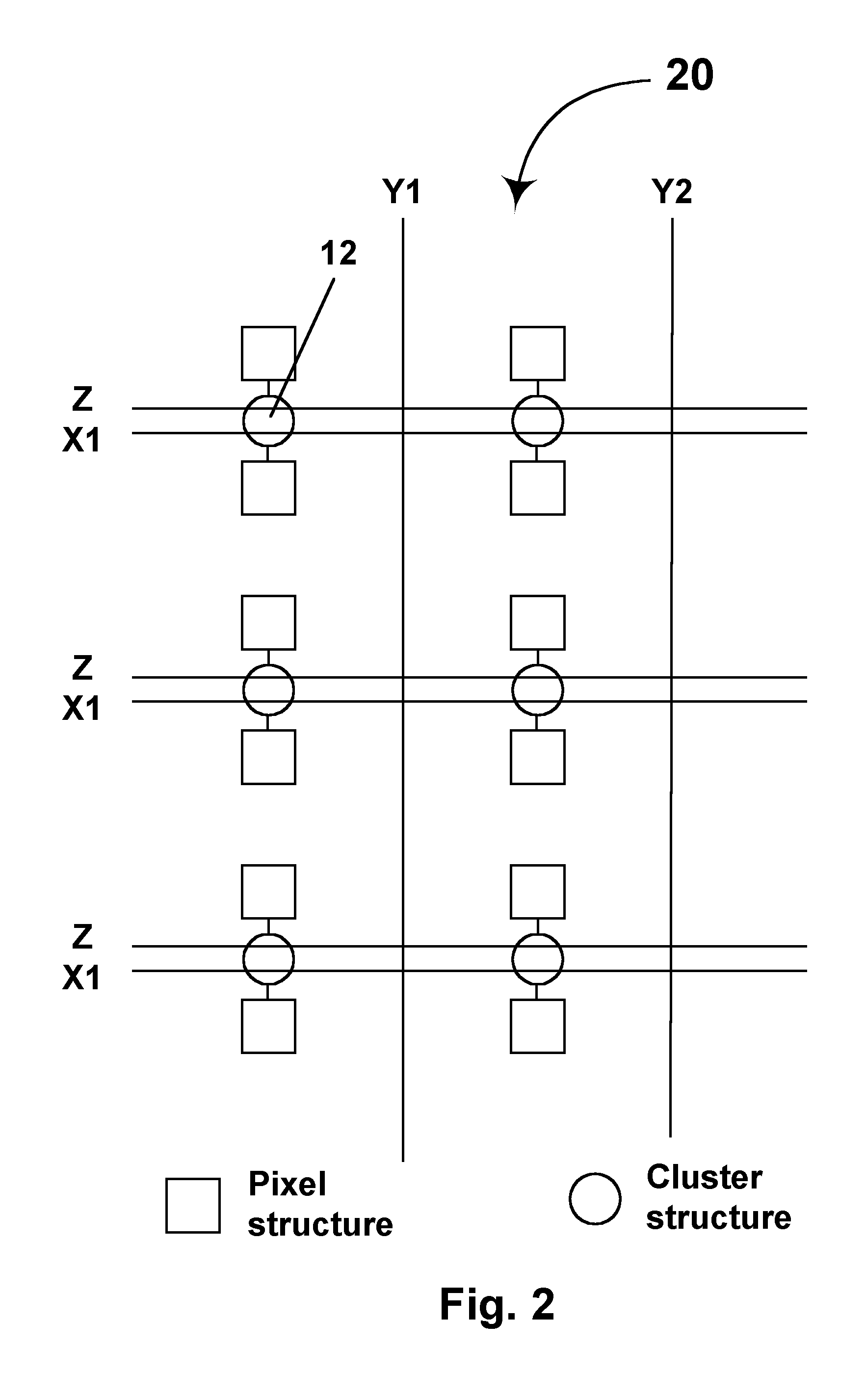Addressing schemes for electronic displays
a technology of electronic displays and address schemes, applied in the direction of instruments, optics, static indicating devices, etc., can solve the problems of preventing their widespread use, inadequate service life of these displays, and normally precluding the use of passive matrix addressing methods
- Summary
- Abstract
- Description
- Claims
- Application Information
AI Technical Summary
Problems solved by technology
Method used
Image
Examples
Embodiment Construction
[0049] As already mentioned, the three dimensional displays and methods of the present invention use an electro-optic material having a plurality of pixels, and separate first, second and third sets of addressing means for addressing the pixels. In this display and method, each of the pixels is associated with one addressing means in each of the three sets, such that addressing of any specific pixel requires application of signals within predetermined ranges to each of the three addressing means associated with that specific pixel. The additional dimension is accomplished by introducing a method of addressing sub-arrays within the array. By thus substituting a three-dimensional addressing scheme for a two-dimensional one, the number of drivers can be greatly reduced. In effect, the present invention splits the display into z regions, each addressable by the x columns and y rows, enabling the entire display of x*y*z pixels to be addressed by x + y + z drivers. For example, the aforem...
PUM
| Property | Measurement | Unit |
|---|---|---|
| time | aaaaa | aaaaa |
| conductive | aaaaa | aaaaa |
| non-conductive | aaaaa | aaaaa |
Abstract
Description
Claims
Application Information
 Login to View More
Login to View More - R&D
- Intellectual Property
- Life Sciences
- Materials
- Tech Scout
- Unparalleled Data Quality
- Higher Quality Content
- 60% Fewer Hallucinations
Browse by: Latest US Patents, China's latest patents, Technical Efficacy Thesaurus, Application Domain, Technology Topic, Popular Technical Reports.
© 2025 PatSnap. All rights reserved.Legal|Privacy policy|Modern Slavery Act Transparency Statement|Sitemap|About US| Contact US: help@patsnap.com



